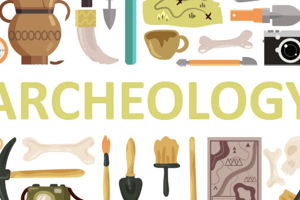Podcast
Questions and Answers
Which of the following best exemplifies the application of the scientific method?
Which of the following best exemplifies the application of the scientific method?
- Relying on religious texts to understand the origins of the universe.
- Accepting traditional knowledge about herbal medicine without questioning its effectiveness.
- Forming moral judgments based on personal feelings.
- Conducting an experiment to test a hypothesis about the effect of sunlight on plant growth. (correct)
In a scientific experiment studying the effect of fertilizer concentration on plant height, what is the independent variable?
In a scientific experiment studying the effect of fertilizer concentration on plant height, what is the independent variable?
- The amount of water given to the plants.
- The height of the plants.
- The type of plant used in the experiment.
- The concentration of the fertilizer. (correct)
Which of the following statements accurately reflects the relationship between a hypothesis and a theory?
Which of the following statements accurately reflects the relationship between a hypothesis and a theory?
- A theory is a prediction regarding cause-and-effect relationships, whereas a hypothesis incorporates extensive observation, experimentation, and creative reflection.
- Hypotheses and theories are essentially the same thing, differing only in the amount of evidence supporting them.
- A hypothesis is a well-substantiated explanation of some aspect of the natural world, while a theory is a tentative prediction.
- A hypothesis is a prediction regarding cause-and-effect relationships, while a theory is a well-substantiated explanation incorporating facts, laws, and tested hypotheses. (correct)
How does natural selection contribute to the evolution of a population?
How does natural selection contribute to the evolution of a population?
What is the significance of Gregor Mendel's work to the understanding of inheritance?
What is the significance of Gregor Mendel's work to the understanding of inheritance?
How does 'Gene Flow' affect genetic variation between populations?
How does 'Gene Flow' affect genetic variation between populations?
Within the context of population genetics, what does the Hardy-Weinberg equilibrium describe?
Within the context of population genetics, what does the Hardy-Weinberg equilibrium describe?
Which of the following is a misconception regarding natural selection and evolution?
Which of the following is a misconception regarding natural selection and evolution?
How do prezygotic reproductive isolating mechanisms differ from postzygotic reproductive isolating mechanisms?
How do prezygotic reproductive isolating mechanisms differ from postzygotic reproductive isolating mechanisms?
What role does mutation play in evolution?
What role does mutation play in evolution?
Flashcards
Science
Science
A body of knowledge accumulated through discoveries of the natural world, using a systemic and logical approach.
Empirical Evidence
Empirical Evidence
Information acquired by observation or experimentation, free from bias.
Hypothesis
Hypothesis
A prediction regarding cause-and-effect relationships, often phrased as an 'if this occurs, then this will happen' statement.
Theory
Theory
Signup and view all the flashcards
Evolution
Evolution
Signup and view all the flashcards
Natural Selection
Natural Selection
Signup and view all the flashcards
Taxonomy
Taxonomy
Signup and view all the flashcards
Genetic Drift
Genetic Drift
Signup and view all the flashcards
Prezygotic RIM
Prezygotic RIM
Signup and view all the flashcards
Genetic Adaptations
Genetic Adaptations
Signup and view all the flashcards
Study Notes
Four Fields of Anthropology
- Anthropology includes: cultural studies, linguistics, archaeology, biological anthropology, and related subfields.
The Scientific Method
- Science is knowledge gained through discoveries about the natural world.
- Science uses a systematic and logical method to uncover knowledge that is self-correcting and repeatable.
- Science effectively studies the world, but does not give moral, ethical, or supernatural guidance, for which religions are used.
- Empirical evidence is information from observation or experimentation.
- The scientific method obtains empirical evidence without bias.
- The scientific method involves observation, testable hypothesis formation, experimental testing, data analysis, conclusion forming, and results reporting.
- An independent variable is a factor changed in an experiment.
- A dependent variable may change due to the effects of the independent variable.
- A hypothesis predicts a cause-and-effect relationship: "If this occurs, then this will happen."
- Theories are understandings from extensive observation, experimentation, and creative reflection.
- Theories incorporate scientific facts, laws, tested hypotheses, and logical inferences.
- Theories are rarely overturned after new evidence emerges.
History of Evolutionary Thought & Natural Selection
- The Christian Worldview of Human Origins influenced European intellectual thought (1400-1700).
- Fixity of Species: species never changed.
- Great Chain of Being: animals in a hierarchy with humans on top
- Young Earth: earth only a few thousand years old (Bishop James Usher).
- Aristotle created The Great Chain of Being.
- The scientific revolution occurred in western Europe.
- Ibn Khaldun proposed life transforms in stages from simple to complex forms.
- Bishop James Usher estimated the Earth's creation on October 23, 4004 BC.
- Carl Linnaeus and Taxonomy: the science of naming, describing, and classifying organisms.
- Comte de Buffon argued environment acts as an agent of change.
- Jean-Baptiste Lamarck proposed life changed/evolved.
- Acquired characteristics developed during life are inherited; This is now discredited.
- Georges Cuvier believed in Catastrophism.
- Charles Lyell believed in Uniformitarianism.
- Evolution involves a change in the genetic structure of a population and refers to the appearance of new species.
- Natural Selection: Individuals with helpful phenotypic traits survive and reproduce more in certain environments.
- Charles Darwin and Alfred Wallace made three important observations
- Tendency to overpopulate leads to competition and mortality Enormity of heritable variation
- Observation of Galapagos finches descended with modification and found modification over time from a common mainland ancestor in response to island habitats and diets.
- Tendency for best “fit” variants to leave more offspring.
- Fitness is defined as reproductive success.
- Sexual Selection: a type of natural selection that usually operates on only one sex within a species.
- Adaptation: a trait shaped by natural selection and well suited for an animal's environment.
- Darwin could not explain the mechanisms of inheritance, sources of variation, and mechanism of speciation.
- The forces of evolution are natural selection, mutations, gene flow, and genetic drift.
Mechanisms of Inheritance: Mendelian Inheritance
- Gregor Mendel was an Austrian monk from the 1800s credited with discovering the principles of genetics.
- Blending Inheritance was an 18th-century belief that children were the blend of spiritual essences of each parent.
- This was discredited.
- Law of Independent Segregation: Organism traits are determined by pairs of "particles," one from each parent.
- Law of Independent Assortment: "Particles" for different traits are independently inherited.
- Cell theory and basic cell structure includes Somatic and Gamete cells.
- Somatic cells are regular cells.
- Gametes are sex cells.
Genetics Terms
- DNA (Deoxyribonucleic Acid): Long strings of nitrogen bases that direct synthesis of proteins.
- DNA bases: Adenine, Thymine, Guanine, Cytosine
- Chromosomes: Condensed DNA, arranged into 23 pairs (46 total) in the nucleus.
- Autosomes: All non-sex chromosomes (pairs 1-22).
- Sex Chromosomes: the 23rd pair (X and Y).
- Gene: A DNA segment that codes for a specific protein, separated by non-coding strands (introns).
- Nitrogen bases: The four bases that make up DNA include Adenine, Thymine, Cytosine and Guanine.
- They have specific pairing in the complimentary DNA strand
- Exon is Formed by 3 bases that codes for amino acids.
- Allele: A variant of a gene (e.g., pea color with green and yellow variants).
- Intron consists of non-coding section of DNA.
- Genotype: The genetic makeup of an individual, referring to allele combinations.
- Phenotype: Observable physical characteristics.
- Homozygous/Heterozygous: Having two identical alleles / two different alleles.
- Dominant/Recessive: One allele copy controls phenotype / two copies are needed.
- Co-dominant alleles: Example: ABO Blood Group: A and B are co-dominant, O is recessive.
- Monogenic traits are traits controlled by one gene.
- Polygenic/Continuous traits have a continuous range of variation, like height, weight, or color.
- Inheritance:
- Polygenic Inheritance is from many genes throughout the genome.
- Epigenetic Inheritance: gene expression is influenced by environmental factors.
Cellular Division and Source of Variation
- Mitosis: Body (somatic) cells divide to replicate, resulting in daughter cells with the same 46 chromosomes.
- Meiosis: Cell division creates gametes, each with half the DNA of a normal body cell (23 chromosomes without homologous pairs).
- Gametes are sex cells (sperm and eggs), each with only 23 chromosomes.
- Sexual Reproduction: Genes combine from each parent to create an offspring.
- This results in much genetic variation in the offspring (reshuffling the variation).
- Recombination: Chromosomes swap DNA during meiosis.
- Mutations: Substitutions, insertions, deletions.
Lactase Persistence and Pedigree Analysis
- The evolution of Lactose tolerance determines the influence of culture.
- Discuss the genetics, mechanisms, enzymes, digestion of lactose, and cultural influences
- Pedigrees reflect inheritance patterns, requiring you to "read" and know symbols to determine if a trait is dominant or recessive.
Applications
- DNA base pair rules and complimentary bases help ability to identify complementary base pair sequences and mutations.
- Punnett Square: Predicts cross outcomes.
- Pedigree Analysis
- Hardy-Weinberg Equilibrium (p2+2pq+q2=1): Describes a non-evolving population (constant allele frequencies).
Population Genetics & Forces of Evolution
- Biological Evolution: Change in a population's genetic structure.
- Forces of Evolution: Mutation, Gene Flow, Genetic Drift, Natural Selection.
- Natural selection adapts a population to its environment.
- Directional selection shifts traits away from the average.
- Stabilizing selection maintains the average trait.
- Disruptive selection favors two extremes.
- Balancing selection maintains variation via multiple alleles (polymorphism); e.g., Sickle Cell.
- Mutation: Random genetic code changes and the ultimate source of variation.
- Types: substitutions, insertions, deletions
- Causes: environmental, chemical, spontaneous, virus
Gene Flow & Genetic Drift
- Gene Flow: Genes exchanged between populations during sexual reproduction. Increases genetic variation/similarity in geographically close populations.
- Genetic Drift: Random allele frequency fluctuations due to sampling error.
- Certain individuals contribute to the next generation not because they are more fit, but because of chance occurrences
- Affects small populations more than large populations.
- Founder Effect: A small population breaks off to found a new group, causing allele frequency to vary dramatically.
- Population Bottleneck: A large population drastically reduces in size, causing surviving individuals to have different allele frequency.
The Modern Synthesis
- Evolutionary forces affect variation within/between populations.
- Genetic Variation: How many distinct genetic differences exist among group members.
- Genetic Distance: How different two populations are genetically.
- Within-group variation: How much of the total variation exists in a single population.
- Forces of evolution increase or decrease within-group variation:
- Mutation/gene flow produce
- Natural selection/genetic drift reduce
- Between-group variation: Genetic variation that differs between two groups.
- Forces of evolution increase or decrease between-group variation:
- Mutation/genetic drift produce
- Natural selection/gene flow reduce
- Comparing populations: Genetic distance calculates the difference between within-group and between-group variation.
- Distance: Distance between populations increases over time (due to mutation/drift) and space (reduced gene flow).
- Speciation: Gene flow interruption increases genetic distance.
- Reproductive Isolating Mechanisms (RIM): Mechanisms that keep two populations from interbreeding.
- Prezygotic RIM: Prevents mating via ecological, behavioral, temporal, or mechanical factors.
- Postzygotic RIM: Prevents viable offspring after mating due to genetic factors.
Misconceptions, Modern Humans, and Adaptations
- Natural Selection/Evolution does NOT produce variation; it acts on existing variation.
- Evolution DOESN'T equal progress toward "better" organisms.
- Historical Perspectives on Human Variation
- Biological Determinism: Behavior, morals, intelligence are governed by skin color-linked genetic/biological factors.
- Eugenics: The philosophy of race improvement through forced sterilization of “unfit" people and increased reproduction of those with better qualities.
- Cultural Relativism and Frans Boas
- Genetic Diversity: Greatest genetic diversity exists in Africa, with humans having ~0.1% nucleotide diversity.
- Populations outside of Africa are less diverse due to multiple founding events (founder effect).
- Race: Race is a cultural construct, not biological.
- Polytypic species
- Stress and Homeostasis
- Types of adaptation and the role of the environment: Genetic and Cultural.
- Genetic adaptations include:
- Skin color, melanin, and solar radiation:
- Eumelanin (brown/black pigment): a natural sunblock in darker skin.
- Phaeomelanin (yellow/red pigment): phototoxic in paler skin.
- Vitamin D & Folate
- Geographic melanin distribution adapts to the environment.
- Thermoregulation:
- Bergman and Allen's rules
- High-altitude adaptations include:
- EPAS1 mutation in Tibetans
- Cultural adaptations in the Andes
Studying That Suits You
Use AI to generate personalized quizzes and flashcards to suit your learning preferences.





